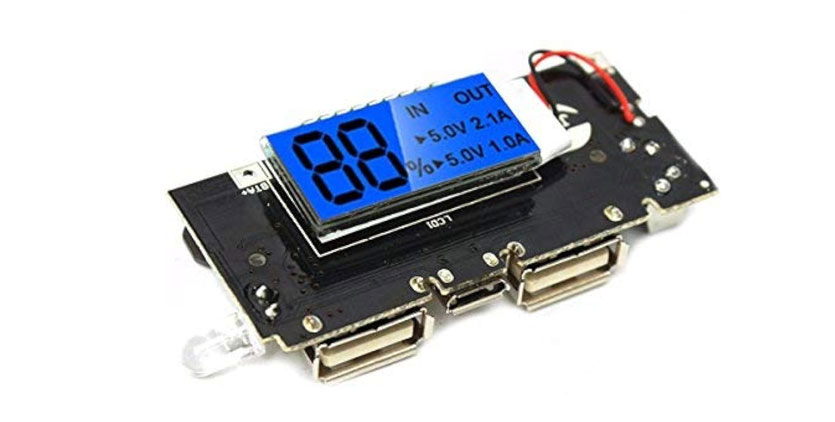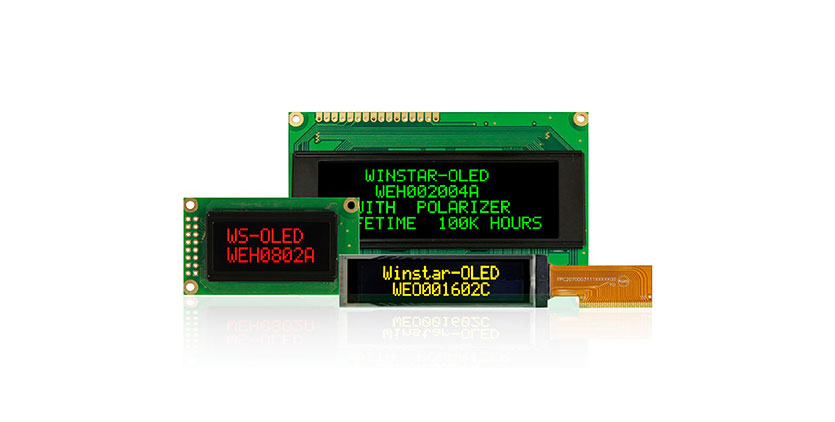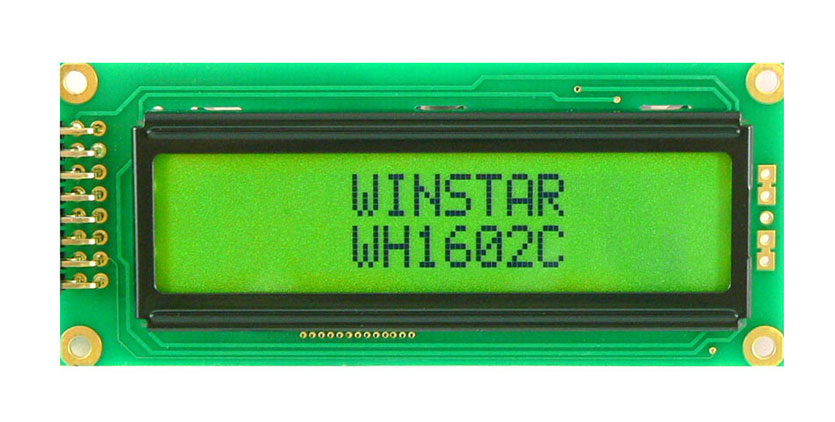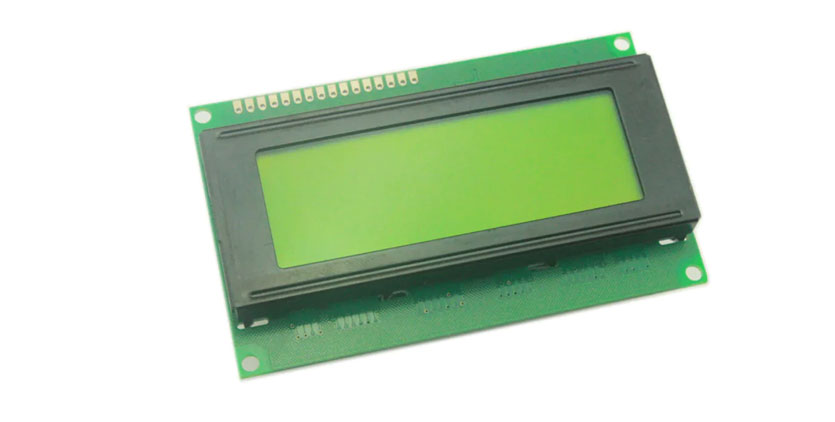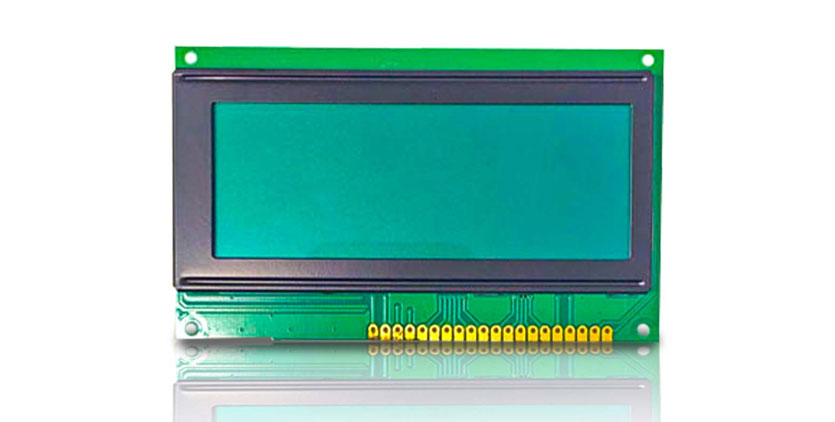Introduction to Display Modules in Electronic Manufacturing
In the dynamic landscape of electronic manufacturing, display modules play a pivotal role in shaping the user experience and functionality of a wide array of devices. These modules serve as the visual interface between users and electronic products, providing crucial information, graphics, and interactive elements.
Among the various types of display modules, OLED (Organic Light-Emitting Diode) and LCD (Liquid Crystal Display) stand out as leading technologies, each with its own distinct advantages and applications. OLED displays offer unparalleled contrast ratios, vibrant colors, and slim form factors, making them ideal for applications where visual clarity and aesthetics are paramount. On the other hand, LCD displays, available in both monochrome and color variants, provide reliable performance and cost-effective solutions for a diverse range of electronic products.
In addition to OLED and LCD, other types of display modules such as TFT (Thin-Film Transistor) LCD, character displays, and touch panels cater to specific requirements and preferences in electronic manufacturing. These modules enable manufacturers to tailor the visual output of their products to meet the needs of various industries and end-users.
As we delve deeper into the realm of electronic manufacturing, understanding the significance of display modules becomes essential. These components not only enhance the functionality and appeal of electronic products but also pave the way for innovation and advancement in technology.
Enhancing User Experience with OLED Graphic Display Modules
In the realm of electronic manufacturing, OLED (Organic Light-Emitting Diode) Graphic Display Modules stand out for their ability to elevate user experience through unparalleled visual clarity and contrast. Unlike traditional LCD displays, OLED technology offers several distinct advantages that significantly enhance the viewing experience.
One of the primary benefits of OLED technology is its ability to achieve deep blacks and infinite contrast ratios. Unlike LCDs, which require a backlight to illuminate the display, OLED pixels emit their own light individually. This results in true black levels and vibrant, lifelike colors, making OLED displays ideal for applications where visual clarity and contrast are paramount.
The applications of OLED Graphic Display Modules in electronic products are vast and diverse. These modules find extensive use in industries such as automotive, consumer electronics, healthcare, and industrial automation, among others. In automotive applications, OLED displays are utilized in instrument clusters, infotainment systems, and heads-up displays to provide drivers with clear, easily readable information and graphics.
In consumer electronics, OLED displays are featured in high-end smartphones, tablets, and televisions, where they deliver immersive viewing experiences with vibrant colors and deep blacks. In healthcare, OLED displays are employed in medical devices such as patient monitors and diagnostic equipment, where accurate visualization of data is critical for patient care.
OLED Graphic Display Modules play a pivotal role in enhancing user experience across a wide range of electronic products.
Precision and Versatility: OLED Character Display Modules
OLED Character Display Modules stand out in electronic manufacturing for their precision and versatility in showcasing alphanumeric characters. Unlike traditional character displays, OLED modules offer several distinct advantages that cater to a wide range of applications.
One of the key features of OLED character displays is their ability to render crisp and clear alphanumeric characters with exceptional precision. Each character is displayed with high contrast and sharpness, ensuring readability even in challenging environments or under varying viewing angles. This precision is particularly beneficial in applications where accurate and concise information display is essential.
The versatility of OLED character display modules extends beyond simple alphanumeric characters. These modules can also display symbols, icons, and graphical elements with clarity and detail, allowing for enhanced visual communication in electronic products. This versatility enables manufacturers to create intuitive user interfaces that convey information effectively and efficiently.
In electronic manufacturing, OLED character display modules find use in a variety of applications where clear and concise information display is crucial. One common application is in electronic instrumentation and measurement devices, where OLED character displays provide real-time feedback on parameters such as temperature, pressure, and voltage.
Another use case for OLED character display modules is in consumer electronics, such as smartwatches and fitness trackers, where they provide users with instant access to notifications, messages, and other relevant information.
Whether in industrial settings, consumer electronics, or instrumentation devices, these modules enable clear and concise information display, enhancing the user experience and improving overall usability.
Visual Impact: Graphic LCD Display Modules
Graphic LCD Display Modules play a crucial role in electronic manufacturing by offering a versatile platform for conveying complex graphics and images with precision and clarity. Unlike traditional alphanumeric displays, graphic LCDs have the capability to render intricate visuals, making them indispensable in applications where visual impact is paramount.
One of the primary functions of graphic LCD display modules is to convey complex graphics and images with exceptional detail and fidelity. These displays are equipped with high-resolution screens and advanced rendering capabilities, allowing them to accurately reproduce intricate designs, charts, maps, and other visual elements. This capability is particularly advantageous in industries such as gaming, automotive, and medical imaging, where the accurate representation of graphics is critical for user engagement and decision-making.
Moreover, the versatility of graphic LCD display modules allows manufacturers to customize the user interface according to specific branding requirements or user preferences. By leveraging the full spectrum of colors, fonts, and graphical effects available on graphic LCDs, designers can create visually distinctive interfaces that reinforce brand identity and enhance brand recognition. This level of customization fosters a deeper connection between users and electronic products, leading to increased brand loyalty and customer satisfaction.
Graphic LCD display modules play a pivotal role in electronic manufacturing by providing a platform for conveying complex graphics and images with precision and clarity. By elevating the visual appeal of electronic products and enabling customized user interfaces, graphic LCDs contribute to enhanced user engagement, improved usability, and greater market competitiveness.
Reliability in Information Display: Alphanumeric LCD Display Modules
Alphanumeric LCD Display Modules stand as reliable solutions in electronic manufacturing, consistently delivering essential information with utmost clarity and dependability. Their proven track record in presenting critical data accurately makes them indispensable in various applications where clear text display is paramount.
The reliability of alphanumeric LCD displays stems from their robust design and simple operation. Unlike more complex display technologies, such as OLED or TFT LCD, alphanumeric LCDs utilize a straightforward mechanism that ensures consistent performance over time. This reliability is particularly crucial in environments where stability and longevity are essential, such as industrial automation, automotive instrumentation, and medical devices.
In electronic manufacturing, alphanumeric LCD display modules find a multitude of suitable applications where clear text display is crucial for conveying essential information. One primary application is in control panels and user interfaces for industrial machinery and equipment. Alphanumeric LCDs provide operators with real-time feedback on operational parameters, such as temperature, pressure, and flow rates, enabling them to monitor and adjust processes with precision.
Alphanumeric LCD display modules offer reliability and clarity in presenting essential information, making them indispensable in various applications within electronic manufacturing. From industrial automation to consumer electronics, these displays play a vital role in ensuring smooth operation and effective communication, ultimately contributing to the overall reliability and usability of electronic products.
Vivid Visuals: TFT LCD Display Modules
TFT LCD Display Modules stand at the forefront of visual innovation in electronic manufacturing, boasting vibrant colors and high-resolution capabilities that captivate users and enrich the user interface of electronic devices. Through their advanced technology and superior performance, TFT LCDs offer a visually immersive experience that enhances usability and engagement across a wide range of applications.
One of the key features of TFT LCD display modules is their ability to produce vivid and lifelike colors with remarkable accuracy. Unlike traditional LCD displays, TFT (Thin-Film Transistor) technology enables precise control over individual pixels, allowing for a broader color gamut and enhanced color reproduction. This capability ensures that images, graphics, and videos displayed on TFT LCDs appear vibrant, saturated, and true to life, making them ideal for applications where visual appeal is paramount.
Beyond their technical capabilities, TFT LCD display modules enrich the user interface of electronic devices through their versatility and flexibility. These displays can be easily integrated into a wide range of electronic products, from smartphones and tablets to automotive infotainment systems and industrial control panels. Their responsive touchscreens enable intuitive interaction, allowing users to navigate menus, swipe through content, and input data with ease.
TFT LCD display modules are indispensable in electronic manufacturing for their ability to produce vivid visuals and enrich the user interface of electronic devices. With their vibrant colors, high-resolution capabilities, and versatility, TFT LCDs elevate the visual appeal and usability of electronic products, driving innovation and enhancing user engagement in the digital age.
Expanding Display Possibilities: LCD Monitors and USB Monitors
LCD Monitors and USB Monitors are revolutionizing electronic manufacturing by offering expansive display possibilities and unparalleled versatility. From enhancing productivity to facilitating collaboration, these display solutions are transforming the way electronic devices are utilized across various industries.
LCD Monitors, with their large screen sizes and high resolutions, are ubiquitous in electronic manufacturing for their ability to provide clear and detailed visual representations. These monitors find broad applications in settings such as design studios, engineering labs, and production facilities, where precise visualization of data and graphics is essential. Whether it’s analyzing CAD drawings, reviewing schematics, or monitoring production processes, LCD monitors offer the space and clarity needed for effective decision-making and workflow optimization.
USB Monitors, on the other hand, represent a newer and more portable form of display solution, leveraging the convenience of USB connectivity to expand display capabilities. These monitors are ideal for scenarios where mobility and flexibility are paramount, allowing users to easily connect additional screens to laptops, tablets, or other computing devices. USB monitors find applications in field service operations, trade shows, and mobile workstations, enabling users to extend their workspace and maintain productivity on the go.
LCD monitors and USB monitors are expanding display possibilities in electronic manufacturing by offering versatile, convenient, and high-performance solutions for visual communication and collaboration. Whether it’s enhancing productivity in the office, extending display capabilities on the go, or optimizing workflow in production environments, these display solutions are empowering users to achieve more with their electronic devices, driving innovation and efficiency across industries.
Integration into Industrial Environments: Industrial Computers and Android Panel PCs
Industrial Computers and Android Panel PCs are indispensable tools in modern industrial environments, renowned for their ruggedness, reliability, and seamless integration with display modules. These specialized devices play a crucial role in powering and controlling machinery, monitoring processes, and facilitating data collection and analysis in industrial settings.
One of the key features of industrial computers and Android Panel PCs is their rugged construction, engineered to withstand harsh operating conditions such as extreme temperatures, humidity, vibration, and dust. Unlike standard consumer-grade computers, these devices are built to endure the rigors of industrial environments, ensuring uninterrupted operation and minimal downtime even in the most demanding applications.
In addition to their ruggedness and reliability, industrial computers and Android Panel PCs seamlessly integrate with display modules in industrial settings, facilitating real-time monitoring, control, and visualization of processes and data. These devices are equipped with a range of connectivity options, including VGA, HDMI, DisplayPort, and USB, allowing them to easily connect to a variety of display modules such as LCD monitors, touch panels, and graphic displays.
Industrial computers and Android Panel PCs are essential components of modern industrial environments, offering ruggedness, reliability, and seamless integration with display modules. By powering and controlling machinery, monitoring processes, and facilitating data visualization, these devices play a pivotal role in enhancing productivity, efficiency, and safety in industrial settings, driving innovation and growth across industries.
Enhanced Interactivity: Touch Panel Displays
Touch panel displays offer an intuitive user interface that revolutionizes user interaction in electronic manufacturing. With their seamless integration of touch-sensitive technology and vivid visual displays, touch panels provide a natural and intuitive way for users to interact with electronic devices, enhancing usability and efficiency across a variety of applications.
One of the primary benefits of touch panel displays is their intuitive user interface, which allows users to interact directly with the displayed content using simple gestures such as tapping, swiping, and pinching. This intuitive interface eliminates the need for external input devices such as keyboards or mice, streamlining the user experience and reducing the learning curve for operating electronic devices. Whether it’s navigating menus, inputting data, or manipulating objects on the screen, touch panel displays offer a familiar and intuitive interaction paradigm that enhances user engagement and productivity.
In electronic manufacturing, touch panel displays find applications in a wide range of scenarios where enhanced user interaction is essential for optimizing workflow and efficiency. One common application is in industrial automation and control systems, where touch panels serve as human-machine interfaces (HMIs) for controlling machinery, monitoring processes, and accessing real-time data. With touch panel displays, operators can easily interact with complex control systems, make adjustments on the fly, and respond quickly to changing production conditions, leading to improved productivity and reduced downtime.
Touch panel displays offer an intuitive user interface that enhances user interaction and productivity in electronic manufacturing. With applications ranging from industrial automation and quality control to electronic assembly and testing, touch panels play a crucial role in optimizing workflow, improving efficiency, and driving innovation in the electronic manufacturing industry.
Premium Quality Components for Electronic Manufacturing: Royal Display Leads the Way
For electronic product manufacturers seeking premium quality components, Royal Display stands out as a trusted source. With a reputation for excellence and reliability, we offer a comprehensive range of high-quality display modules and components tailored to the specific needs of electronic manufacturing. Whether it’s OLED Graphic Display Modules, TFT LCD Display Modules, or Touch Panel Displays, Royal Display’s products are renowned for our exceptional performance, durability, and visual clarity. Backed by rigorous quality control processes and industry-leading expertise, we ensure that each product meets the highest standards of excellence, making it the go-to destination for manufacturers looking to elevate their electronic products. With Royal Display, manufacturers can rest assured that they are investing in premium quality components that will enhance the functionality, aesthetics, and reliability of their electronic devices, ultimately setting them apart in a competitive market. Contact Us Today!



